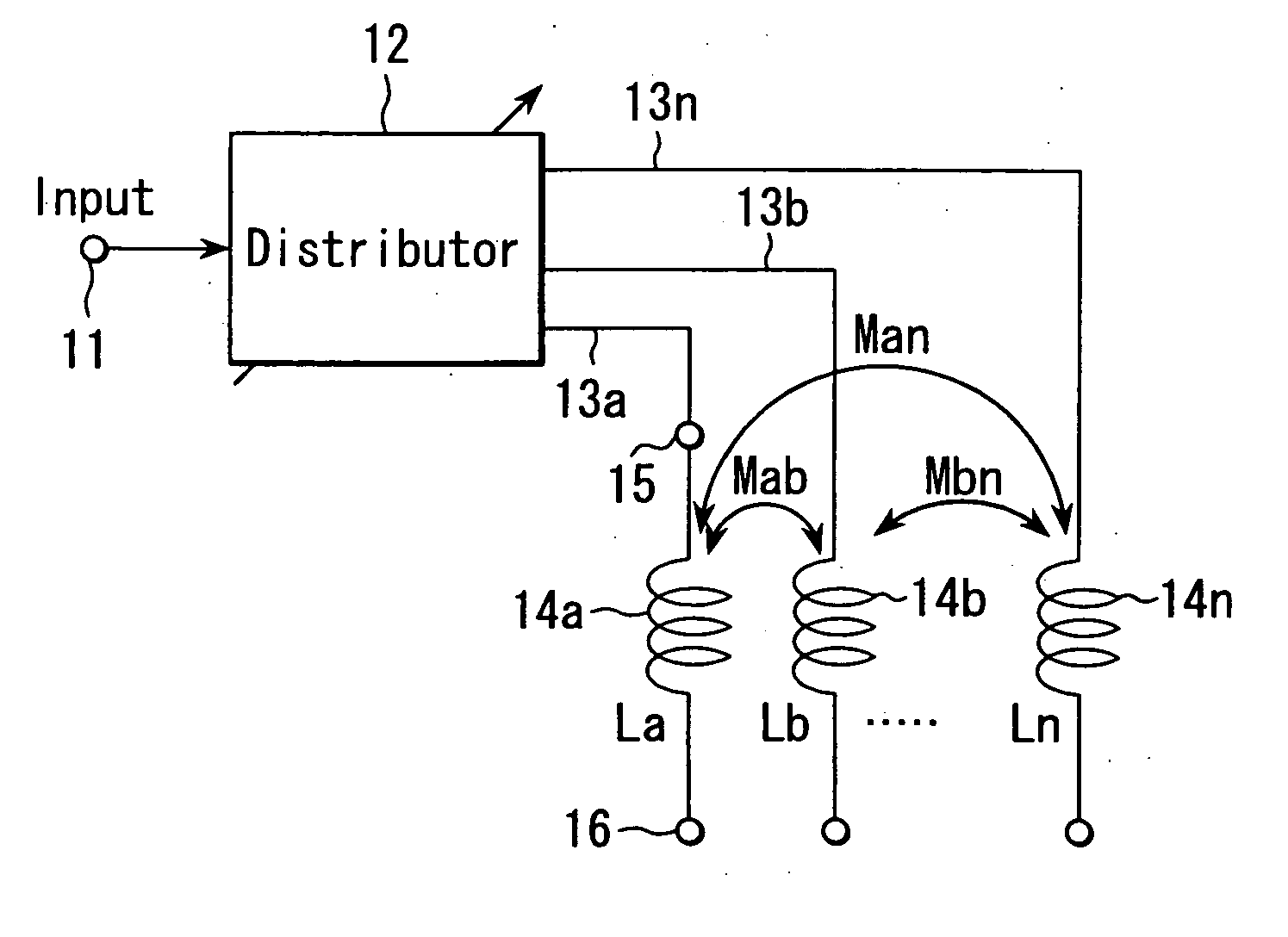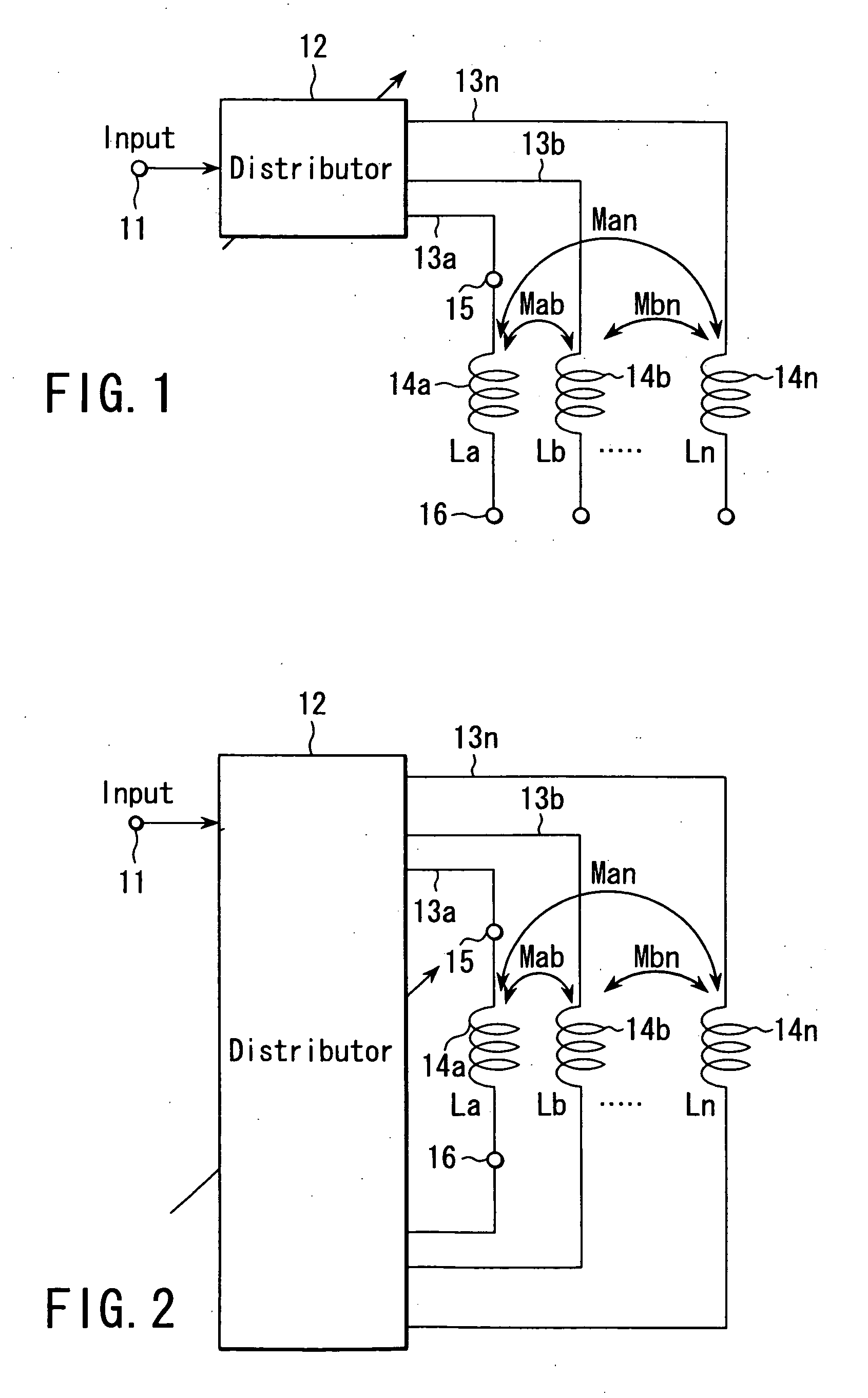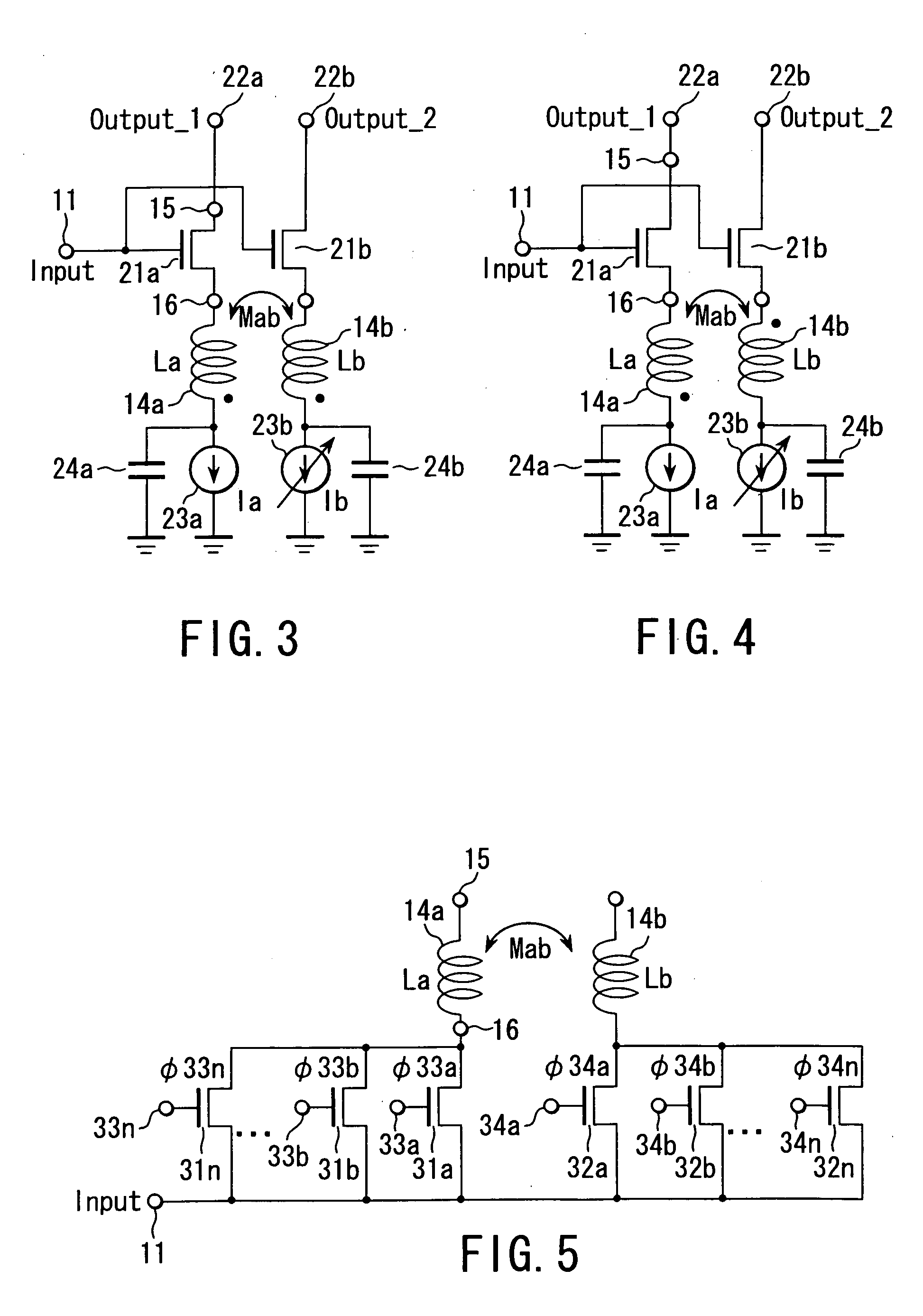Variable inductor, oscillator including the variable inductor and radio terminal comprising this oscillator, and amplifier including the variable inductor and radio terminal comprising this amplifier
a variable inductance, variable technology, applied in the direction of low-noise amplifiers, gated amplifiers, instruments, etc., can solve the problems of difficult to vary the inductance, bad noise or distortion characteristics, and technology problems in practical application, etc., to achieve easy miniaturization, good electric characteristics, and low cost
- Summary
- Abstract
- Description
- Claims
- Application Information
AI Technical Summary
Benefits of technology
Problems solved by technology
Method used
Image
Examples
first embodiment
[0082] First, description will be made of a variable inductor according to a basic embodiment of the present invention. FIGS. 1 and 2 show circuitry of a viable inductor of a first embodiment of the present invention. An input signal (Input) input to a signal input terminal 11 is distributed to a plurality of signal paths 13a, 13b, . . . , 13n by a distributor 12 constituted by using an active element. Inductors 14a, 14b, . . . 14b are inserted into the signal paths 13a, 13b, . . . , 13n. The inductors 14a, 14b, . . . 14n are constituted of, e.g., spirally formed leads, and arranged close to one another to be interconnected.
[0083] The inductors 14a, 14b, . . . 14n generate magnetic fluxes depending on sizes of input signals, and each magnetic flux is applied on the other close inductor to interconnect each inductor with this other inductor. Thus, the inductors 14a, 14b, . . . 14n have self inductance caused by a magnetic flux generated by each inductor itself, and mutual inductance...
second embodiment
[0087]FIGS. 3 and 4 show a variable inductor where the distributor 12 includes a common source circuit according to the embodiment. The circuit of this embodiment is equivalent to the specific circuit example of the basic circuitry shown in FIG. 1. The input signal from the signal input terminal 11 is amplified by a common source circuit, e.g., MOSFET's (simply referred to as transistor, hereinafter) 21a, 21b to be distributed to two signal paths, and supplied to the inductors 14a, 14b inserted into these signal paths. Gate terminals of the transistors 21a, 21b are connected to the signal input terminal 11, source terminals are connected to ends of the inductors 14a, 14b, and drain terminals are connected to output terminals 22a, 22b of the variable inductor. In this variable inductor, signal currents amplified by the MOSFET's 21a, 21b are outputted from output terminals 22a, 22b of the variable inductor.
[0088] The other ends of the inductors 14a, 14b are connected to ends of power...
third embodiment
[0097]FIG. 5 shows a variable inductor according to a third embodiment which uses a transistor circuit where a gate is grounded to a distributor 12. A source terminal of at least one of first transistors 31a, 31b, . . . , 31n, and source terminals of a plurality of second transistors 32a, 32b, . . . , 32n are connected to a signal input terminal 11. Drain terminals of the first transistors 31a, 31b, . . . , 31n are connected to one end of a first inductor 14a, and gate terminals are connected to control signal input terminals 33a, 33b, . . . , 33n. Drain terminals of the second transistors 32a, 32b, . . . , 32c are connected in common to one end of a second inductor 14b, and gate terminals are connected to control signal input terminals 34a, 34b, . . . , 34n.
[0098] Control signals φ33a, φ33b, . . . , φ33n are input to the control signal input terminals 33a, 33b, . . . , 33c. Control signals φ34a, φ34b, . . . , φ34n are input to the control signal input terminals 34a, 34b, . . . , 3...
PUM
 Login to View More
Login to View More Abstract
Description
Claims
Application Information
 Login to View More
Login to View More - R&D
- Intellectual Property
- Life Sciences
- Materials
- Tech Scout
- Unparalleled Data Quality
- Higher Quality Content
- 60% Fewer Hallucinations
Browse by: Latest US Patents, China's latest patents, Technical Efficacy Thesaurus, Application Domain, Technology Topic, Popular Technical Reports.
© 2025 PatSnap. All rights reserved.Legal|Privacy policy|Modern Slavery Act Transparency Statement|Sitemap|About US| Contact US: help@patsnap.com



